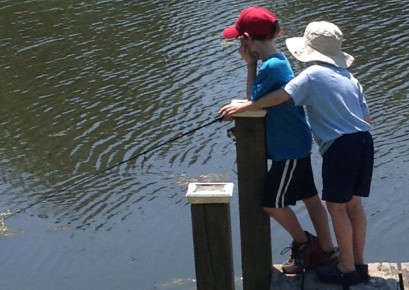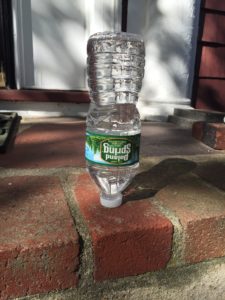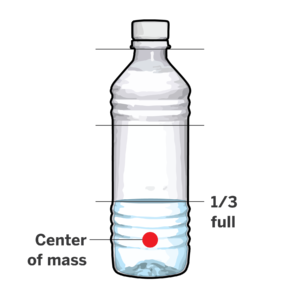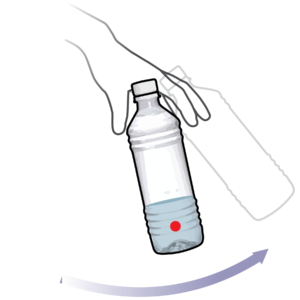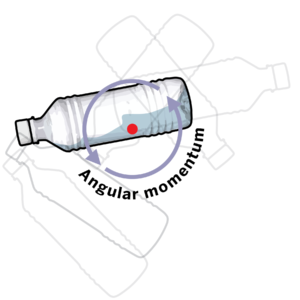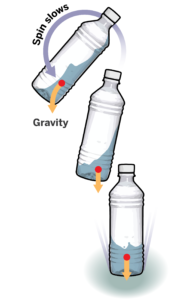Flip It!
Flip It!!
Is it a craze, or is it a movement? Everywhere I go with the boys, I see it happening. … before a game. At Papa Gino’s. Sitting on a picnic table.
Whoosh… splat.
“Oh dude, that was an epic fail!!!”
The boy picks up his water bottle, shakes it, and then grabs his friend’s water bottle to add more water to his own.
“It was too light. Watch. I’ll get it this time.”
I first saw bottle flipping in July, when I was the adult on snack shack duty at a late night baseball game. Teenage girls sat on the floor of the shack, taking turns throwing a nearly full Poland Springs bottle in the air, trying to get it to land perfectly balanced on its cap. They were fully entertained for over an hour, and when it did actually land on the cap they jumped up and high-fived each other… then tried to see if they could do it again.
I watched, impressed they’d found a way to entertain themselves without their phones. Not once did they take a break to check for texts, or look something up, or change the station on the radio (Yes, they were listening to a radio. It’s an old school snack shack). They were laughing and chatting with each other and figuring out new challenges. Little did I know they weren’t the first to try this.
As the summer went on I watched the boys in the baseball dugouts try flipping their bottles on the sly until their coach yelled at them to pay attention to the game. I saw kids on the beach trying to get the bottles flipped onto picnic tables while their parents played cornhole. And then, the other day, I had to tell them to stop trying to flip them into an empty booth at Papa Gino’s. (Inside a fast-casual restaurant potentially disturbing other people trying to enjoy a meal is where I draw the line.)
Other than that last incident, though, I love this. It may be a modern day hula hoop craze, but it costs nothing (other than the bottle of water), hurts no one, and encourages the kids to make up new games, use fine motor skills, and challenge themselves for fun. Best of all, they’re interacting with each other and the world around them instead of leaning over each other’s shoulders to watch whatever is happening on a screen.
They will never train to become Olympic level bottle flippers. There is no chance for a college scholarship in bottle flipping. Their highest aspiration might be to create a viral YouTube video, but so far they’ve been too intent participating to want to record their efforts. Instead, they’re enjoying the moment, encouraging their friends, and laughing when throws go wrong.
I asked if their wrists ever get sore practicing.
“Nah. Mostly our arms get tired first. Sometimes our shoulders. But not that bad.”
I’m sure like most fads it will die out, and by next summer they will be back to spitting sunflower seeds in the dugout, having contests to see who can spit the furthest, the most, the loudest… but until then, they can enjoy flipping in all of its glory.
And if you want to flip yourself, or explain how it works to maximize the science lesson hidden in the hype, here’s a diagram of the science behind bottle flipping, as seen in the Boston Globe:
SCIENCE IN THE TOSS
Begin by holding a plastic bottle, filled a third of the way up, from the top. At this point, the center of mass lies with the water at the bottom of the bottle.
Toss the bottle in a forward and upward motion. The bottle rotates, but most of the water doesn’t because it is free to move around within the bottle instead.
As the bottle continues on its downward path, the spin of it is reduced and transferred to the heavier, contained water. The “spin” refers to a concept known as “angular momentum.”
The bottle soon reaches a point at which it is barely spinning at all, and it falls straight to the surface because of gravity. The weight of the water, as well as the flat bottom of the bottle, contribute to the bottle landing upright.
SOURCES: James Bird, assistant professor fluid dynamics, Boston University; Iain Stewart, physics professor, MIT
